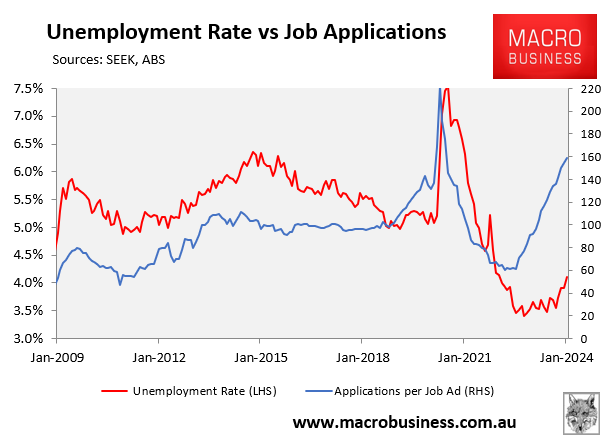The Reserve Bank of Australia (RBA) has released its March Monetary Policy Decision, which, as expected, kept the official cash rate (OCR) on hold at 4.35%.
However, the RBA has removed its tightening bias, noting that the “Board will rely upon the data and the evolving assessment of risks”.
Below are key extracts from the media release.
Recent information suggests that inflation continues to moderate, in line with the RBA’s latest forecasts. The headline monthly CPI indicator was steady at 3.4% over the year to January, with momentum easing over recent months, driven by moderating goods inflation.
Services inflation remains elevated, and is moderating at a more gradual pace. The data are consistent with continuing excess demand in the economy and strong domestic cost pressures, both for labour and non-labour inputs.
Higher interest rates are working to establish a more sustainable balance between aggregate demand and supply in the economy.
Accordingly, conditions in the labour market continue to ease gradually, although they remain tighter than is consistent with sustained full employment and inflation at target.
Wages growth picked up a little further in the December quarter, but appears to have peaked with indications it will moderate over the year ahead.
Nevertheless, this level of wages growth remains consistent with the inflation target only on the assumption that productivity growth increases to around its long-run average. Inflation is still weighing on people’s real incomes and household consumption growth is weak, as is dwelling investment…
The December quarter national accounts data confirmed growth has slowed. Household consumption growth remains particularly weak amid high inflation and the rise in interest rates.
After recent declines, real incomes have stabilised and are expected to grow from here, which is expected to support growth in consumption later in the year…
Employment is expected to continue to grow moderately, and the unemployment rate and the broader underutilisation rate are expected to increase a bit further…
While recent data indicate that inflation is easing, it remains high. The Board expects that it will be some time yet before inflation is sustainably in the target range.
The path of interest rates that will best ensure that inflation returns to target in a reasonable timeframe remains uncertain and the Board is not ruling anything in or out. The Board will rely upon the data and the evolving assessment of risks.
The evolution of the labour market is the key, with the RBA’s end-of-year unemployment forecast of 4.3% hopelessly optimistic.
Unemployment will inevitably shoot up as record growth in labour supply collides with falling demand from employers:

Once unemployment shoots past the RBA’s projection, they will be forced to cut in the second half (possibly sooner, depending on the labour market).

